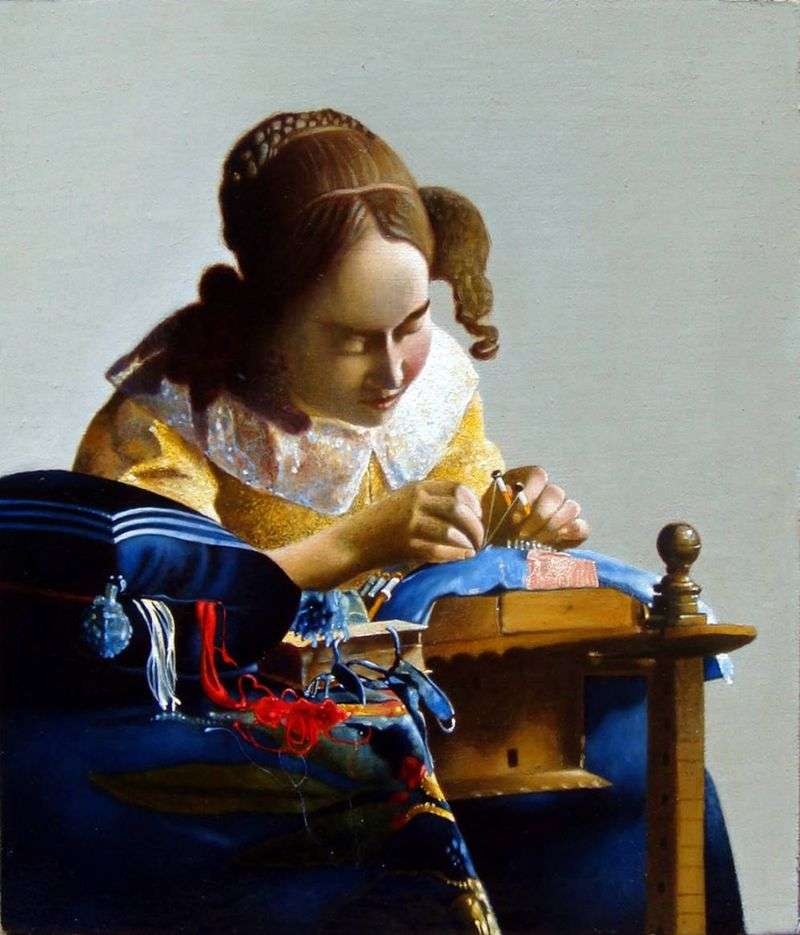
Painting of the Dutch painter Jan Vermeer of Delft “Lacemaker”. The size of the picture is 24 x 20.5 cm, canvas, oil. This is the smallest painting of Vermeer, painted on canvas.
The depicted girl bent over the lace. Her attention is completely absorbed in her work. The picture is written from a close distance, and in order to concentrate the viewer’s attention on the figure of the girl, the artist writes a little vaguely closer objects – a blue embroidery pillow and red and white threads. They seem to “flow”. The cushion is simultaneously a casket and a support for needlework, it was a fairly common object in the household at that time. It was made of dense material, covered with velvet on top, decorated with brushes and braid, inside there were offices with accessories for sewing.
A similar pillow is depicted in the painting “Love Letter”. The table is covered with a tapestry with a floral pattern, the same as in the paintings “Astronomer” and “Reply Message.” These fabrics were not made in the Netherlands, they were brought from the East, but the tapestries were quite often found in the image of the interiors. The table for needlework, over which the girl bent, represented a rather complex design: the triangular table top was fastened on legs with holes, due to which it could be raised or lowered. The white color of the walls, as in most of the paintings of Vermeer, reflects the maniacal striving of the Dutch for purity.
On the wall at the level of the girl’s head is a large, but very pale artist’s signature. Next to the pillow is a brocade book – most likely a Bible or a prayer book. She, like needlework, personifies virtue. The color of clothing and lighting focuses on the face and hands. The girl is dressed in a yellow satin sweater with a white collar, also often seen in Vermeer’s paintings, which uses a rich yellow color to convey the girl’s intense attention. Her clothes may belong to the hostess of the house rather than to the servant, a neat hairstyle emphasizes her modesty. Just laid the hair of a girl in the picture “Woman with a guitar.”
It is believed that in these paintings, the artist depicted someone from his household, perhaps his daughters, Elizabeth or Maria. This same girl is posing in the picture “Lady, writing letter, and maid.” Vermeer portrayed the lace a little from below, concentrating not so much on what the girl is doing, but on the process itself. Weaving of lace, as an independent occupation, appeared in the Middle Ages in Italy. From Italy, fashion for lace came to Spain and the Spanish Netherlands, France, England and Germany. Most often it was such a lace, behind the braiding of which Vermeer painted a girl. She holds the bobbins, her hands are located on a special cushion for weaving lace.
The pillow itself is located on a special table, which makes work much easier. The occupation requires full concentration of attention, one wrong move – and all work will be spoiled. The girl in the picture, apparently, just began to weave lace, she has only a few bobbins in her hands. The woven lace could be either finished or “endless”. For the latter, many repetitive fragments were made, which then were combined. It was for this lace and used a small pillow, as in the picture. Flemish, Belgian and Dutch lace was considered the best and it was readily bought in other countries.
In the Netherlands themselves, according to the traveler, the cult of lace. They were adorned with everything, to the most unusual objects, like a hammer on the door. Weaving of lace, after a wide-spread fashion, was occupied by a very large number of women. This was taught in schools along with the alphabet, young girls weaving their lace earned their dowries, the housewives of the house selling their lace supported the family, and, even widowed, a successful handyman could comfortably exist and raise children. Lace-makers united in the guild, as artists and artisans.
 The Lacemaker by Johannes Vermeer
The Lacemaker by Johannes Vermeer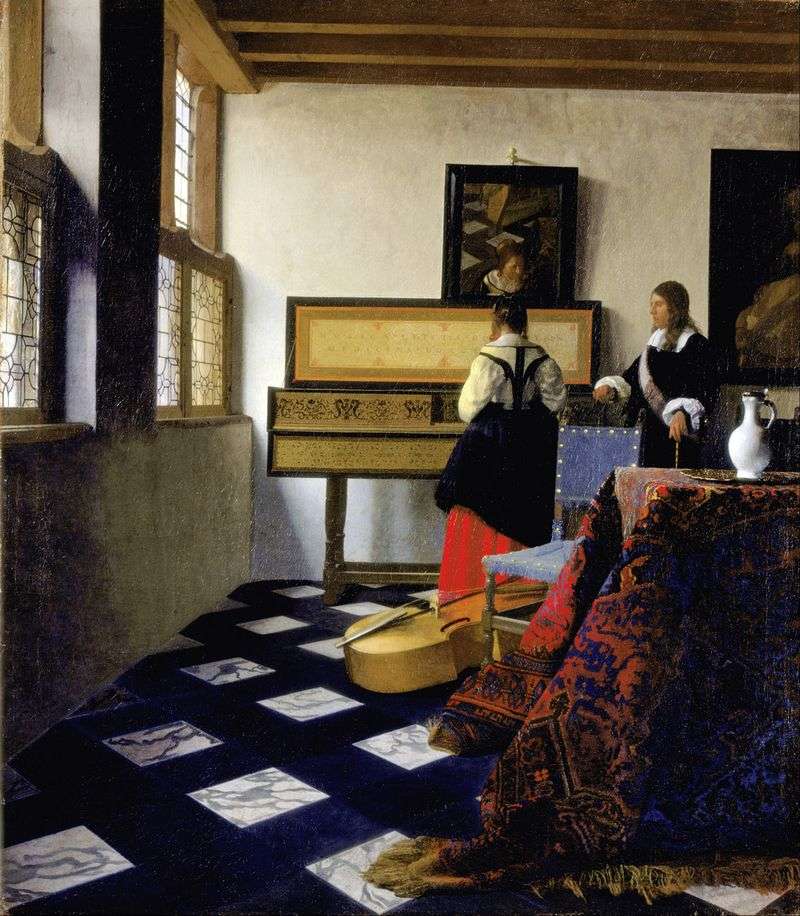 Lady of virginal and cavalier by Jan Vermeer
Lady of virginal and cavalier by Jan Vermeer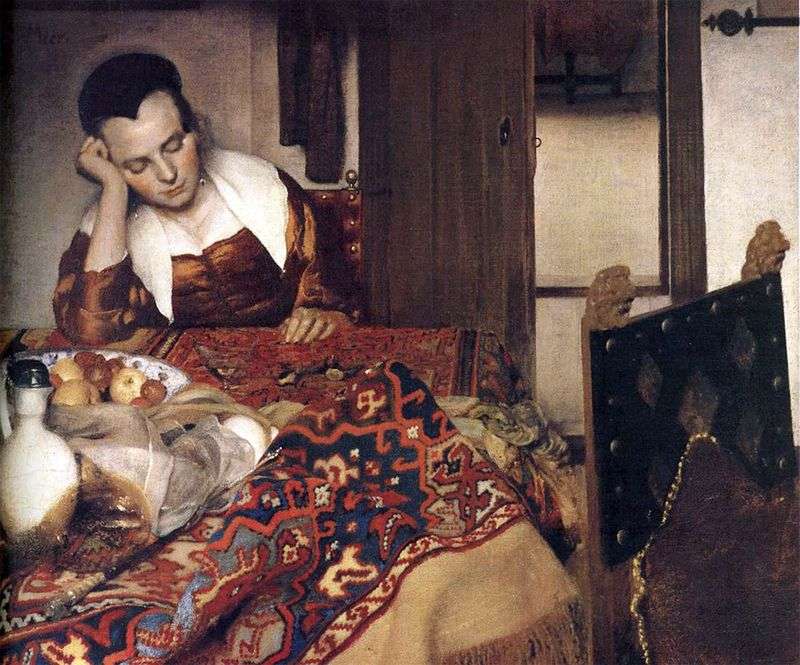 The Sleeping Girl by Jan Vermeer
The Sleeping Girl by Jan Vermeer Girl, writing letter by Jan Vermeer
Girl, writing letter by Jan Vermeer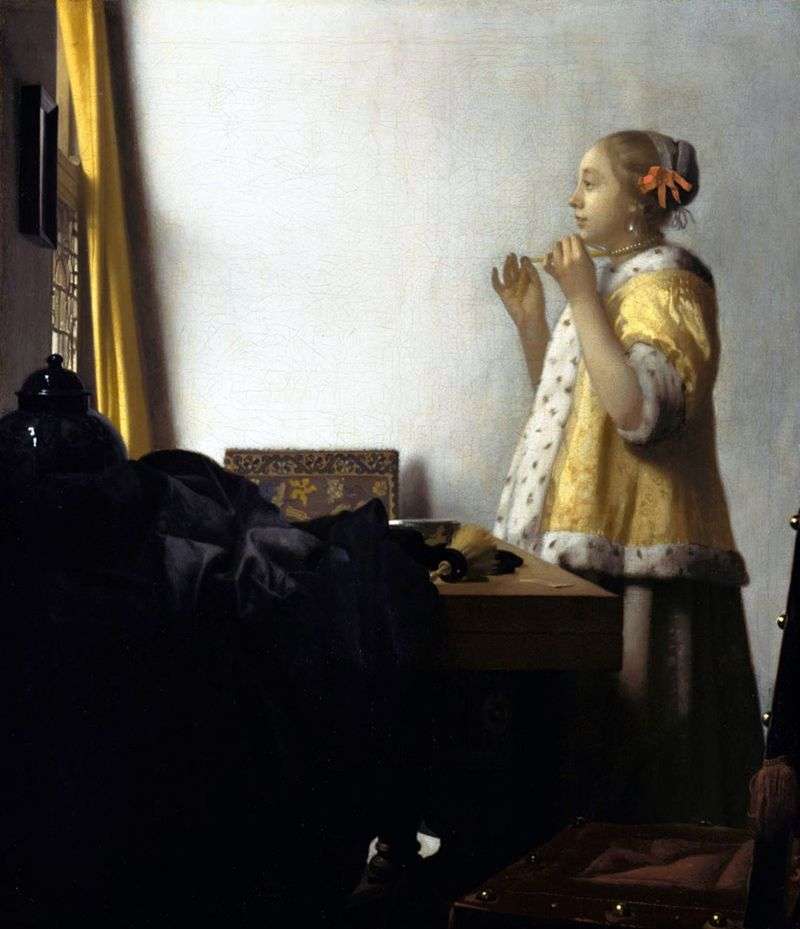 A girl trying on a necklace by Jan Vermeer
A girl trying on a necklace by Jan Vermeer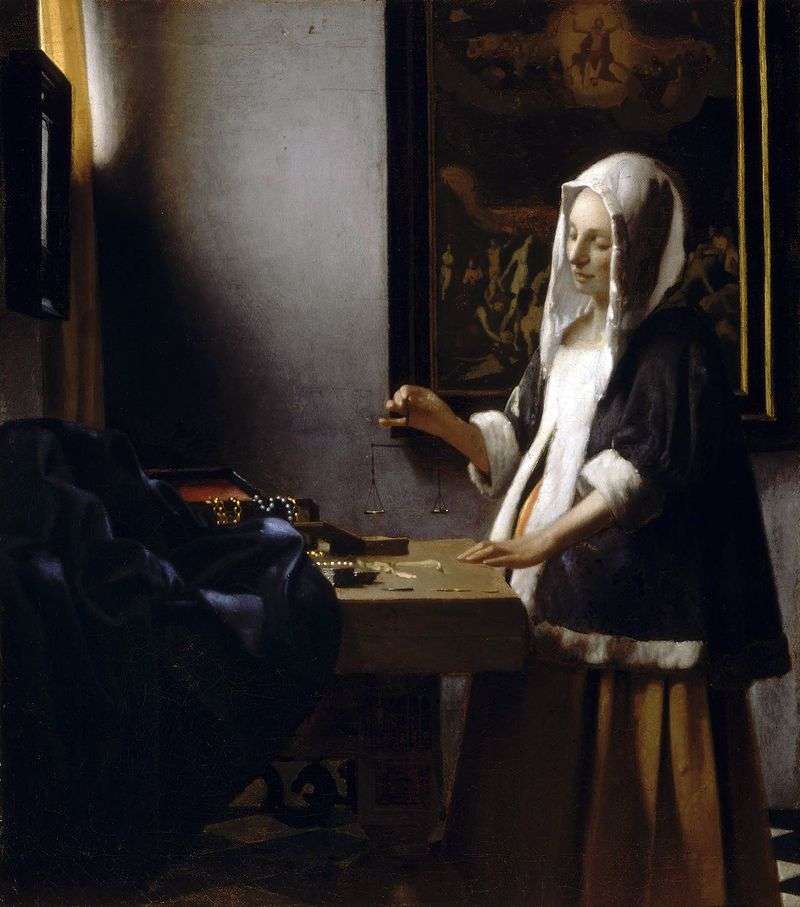 A woman busy with weights by Jan Vermeer
A woman busy with weights by Jan Vermeer Geographer by Jan Vermeer
Geographer by Jan Vermeer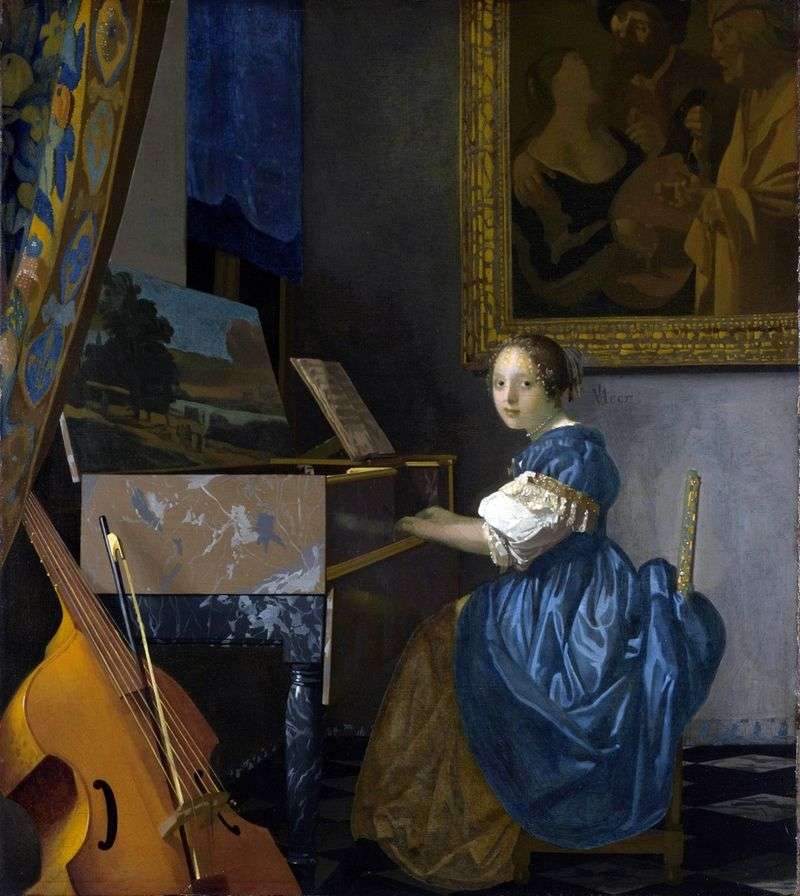 The lady at the back by Jan Vermeer
The lady at the back by Jan Vermeer